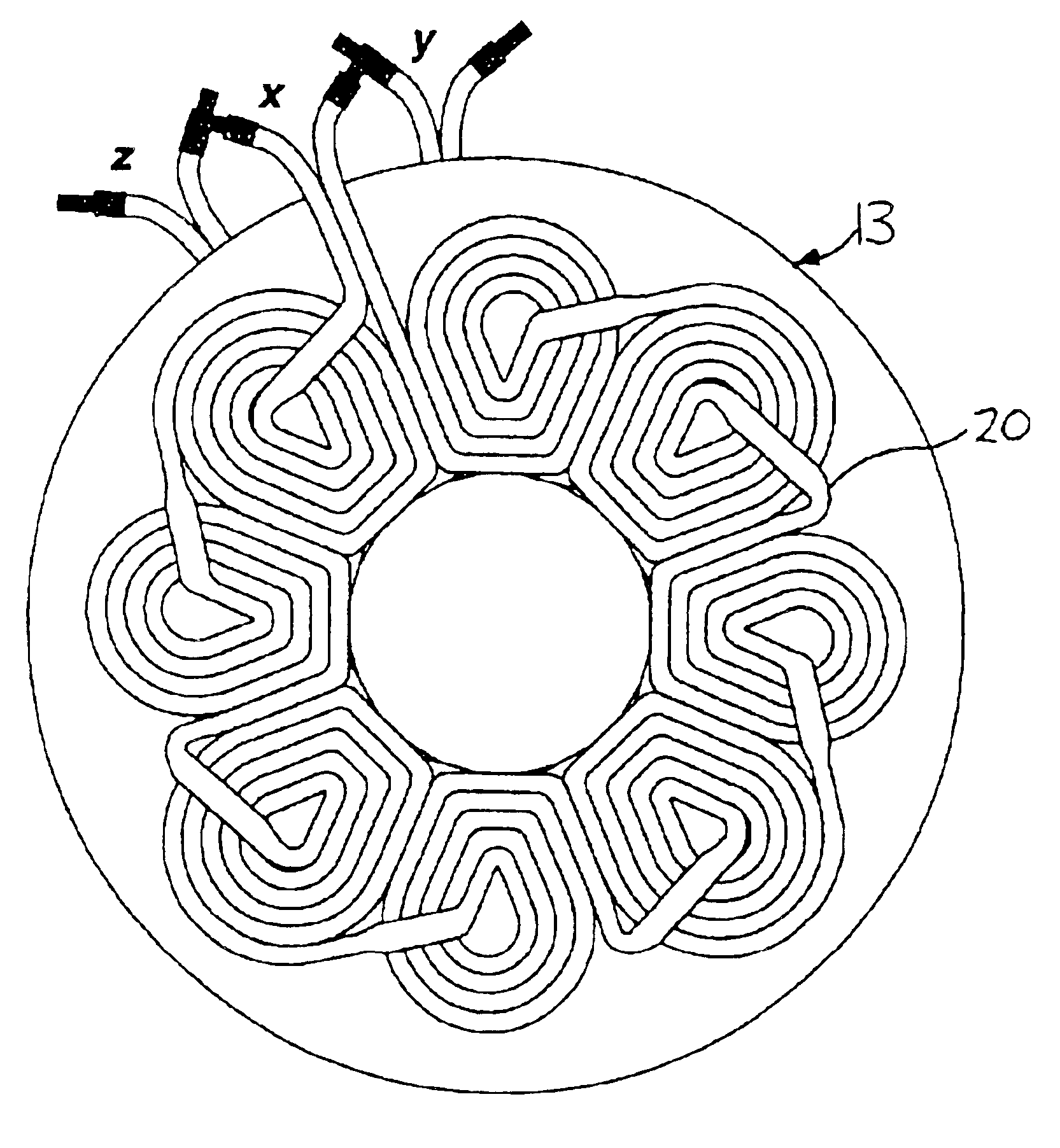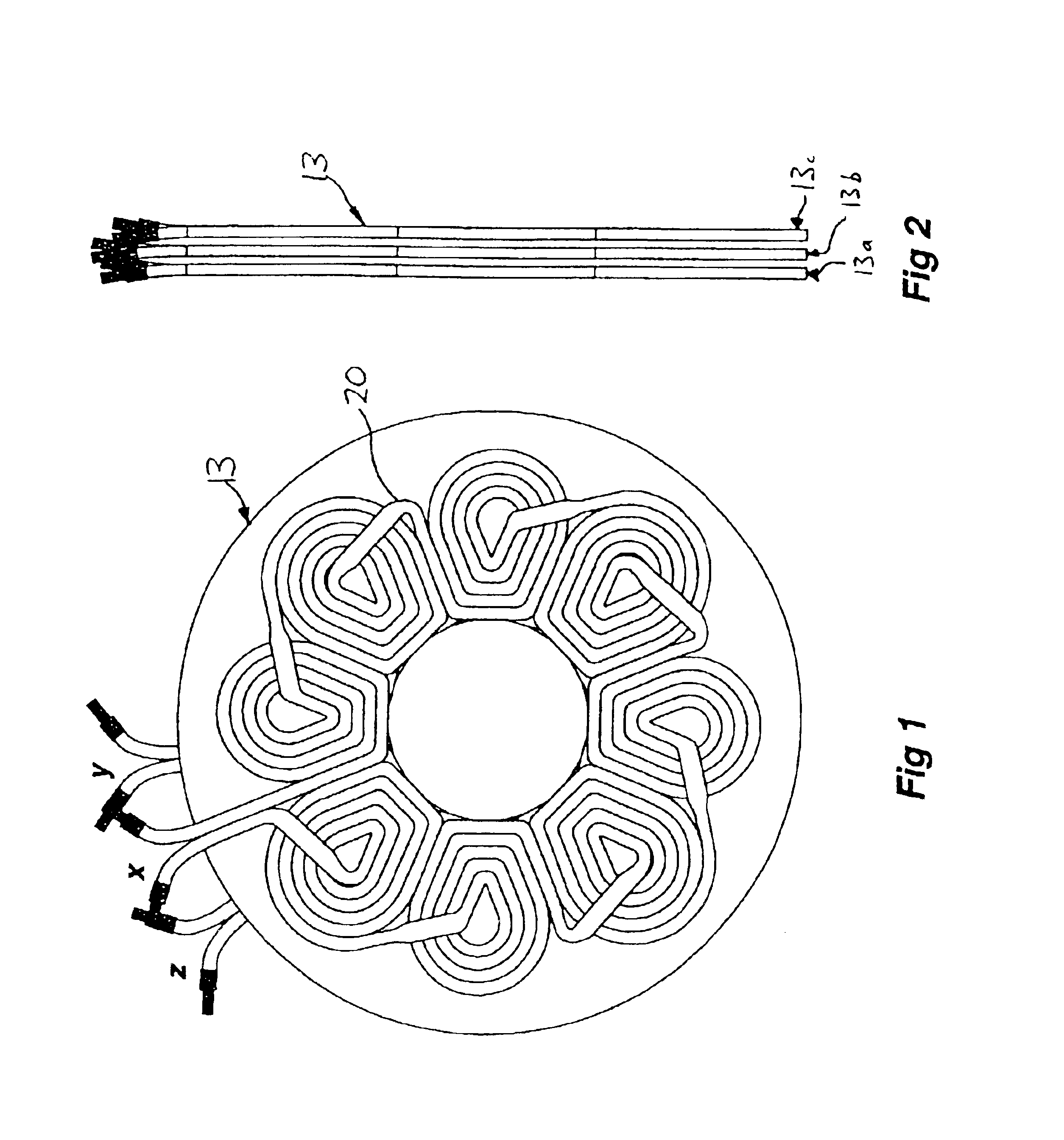Method of forming a winding disc for an axial field electrical machine
a technology of axial field electrical machines and winding discs, which is applied in the direction of electrical apparatus, dynamo-electric machines, electromagnets, etc., can solve the problems of inpractical stator construction, the practical limit of how close the rotor can be brought to the stationary stator, and the inability to meet the requirements of axial thickness, etc., to achieve the effect of reducing axial thickness, providing additional mechanical strength, and protecting against abrasion
- Summary
- Abstract
- Description
- Claims
- Application Information
AI Technical Summary
Benefits of technology
Problems solved by technology
Method used
Image
Examples
Embodiment Construction
[0035]A specific embodiment of the present invention will now be described in detail by reference to the accompanying drawings.
[0036]FIGS. 1 and 2 show one embodiment of the present invention. As can be seen in FIG. 2, the stator disc comprises three separate winding discs 13a, 13b and 13c. Each of these winding discs is substantially identical to the other but arranged so that they are angularly offset from each other as can be seen from the three phase connections x, y, z shown in FIG. 1. Each of the winding discs are attached to each other, preferably with a space therebetween to allow cooling fluid to pass through to assist in cooling the stator.
[0037]As indicated above, each of the winding discs is substantially identical. Therefore only one such winding disc is described in detail below.
[0038]FIG. 1 shows a layout of the windings according to one embodiment of the present invention. In this example, the windings are formed from a single continuous cable which is formed into ei...
PUM
| Property | Measurement | Unit |
|---|---|---|
| powers | aaaaa | aaaaa |
| axial dimension | aaaaa | aaaaa |
| speeds | aaaaa | aaaaa |
Abstract
Description
Claims
Application Information
 Login to View More
Login to View More - R&D
- Intellectual Property
- Life Sciences
- Materials
- Tech Scout
- Unparalleled Data Quality
- Higher Quality Content
- 60% Fewer Hallucinations
Browse by: Latest US Patents, China's latest patents, Technical Efficacy Thesaurus, Application Domain, Technology Topic, Popular Technical Reports.
© 2025 PatSnap. All rights reserved.Legal|Privacy policy|Modern Slavery Act Transparency Statement|Sitemap|About US| Contact US: help@patsnap.com



